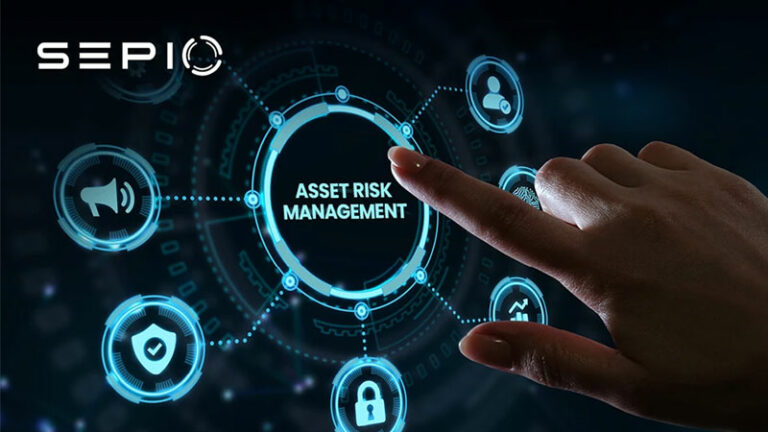We’re excited to announce that we’ve launched our first paid podcast ad on one of our favorite shows – Darknet Diaries with Jack Jack Rhysider. In celebration, we’re thrilled to share some of the best Darknet Diaries episodes.
For those who aren’t already avid listeners, Darknet Diaries tells fascinating stories from the dark side of the internet, with a narrative style inspired by Radiolab and This American Life—but with its own unique, nerdy, and educational flair. It’s honestly our favorite podcast.
To mark this exciting milestone, we’ve put together a selection of Darknet Diaries best episodes where Sepio could have played a crucial role in securing the environment. If you’re new to these episodes, go ahead and download them—and you might even catch our ad! These are just a handful of the 130+ episodes available. We highly recommend listening to them all and subscribing for even more incredible content.
But first, you can hear the ad here:

Our Selection of the Best Darknet Diaries Episodes
In this episode of Darknet Diaries, Kyle Lovett uncovers some deeply concerning security vulnerabilities in certain Asus brand routers. Despite his responsible disclosures, Asus repeatedly ignored the warnings. In an effort to spark action, Kyle went public with some of the lesser-known zero-day vulnerabilities he found, unintentionally triggering the infamous #Asusgate public relations disaster.
Breaking it down: When a vulnerability is made public, it’s crucial to know whether you have any affected assets in your environment, and whether or not they’re being actively used. This is where asset visibility becomes essential. Companies need to maintain a comprehensive list of all connected devices, regardless of their active usage. With Sepio, enterprises gain immediate visibility into whether any risky routers or devices are on their network, no matter the size of the organization.
Episode 6: The Beirut Bank Job
In this thrilling episode of Darknet Diaries, Jason E. Street, a skilled penetration tester, brings out what he calls his “vest of doom,” packed with a pwn plug, a USB Rubber Ducky, and a couple of dropboxes. The episode focuses on his engagement with a Beirut bank, which begins with a Rubber Ducky being plugged into an executive’s computer within minutes. From there, things go downhill for the bank, as the attack escalates rapidly.
Breaking it down: Sepio automatically blocks Rubber Duckies based on their USB Asset DNA, stopping the attack vector before it starts. In addition, policies can be set only allowing approved peripherals and devices, hardening company endpoints and network ports.
Stuxnet is one of the most studied cyber-attacks due to its sophistication and success in targeting an air-gapped OT environment in Natanz, Iran. The attack likely spread via USB sticks brought into the facility by unsuspecting employees.
This episode reveals the development of Stuxnet, the zero-days it exploited, and its lasting impact. It’s a must-listen and truly one of the best Darknet Diaries episodes.
Breaking it down: Air-gapped environments should block USB storage devices. Sepio protects endpoints by preventing unauthorized USB devices from delivering harmful payloads.
In this Darknet Diaries episode, Kyle, a physical penetration tester, is hired to test the security of a major utility. After gaining access to a facility, he quickly plugs a dropbox—a Raspberry Pi connected to a wireless card—into a network port. The result? Domain admin access in minutes.
Kyle doesn’t stop there. He tests another site and even a copier with a network port, continuing to use his dropbox to breach security.
Breaking it down: This critical infrastructure utility lacked multiple layers of protection. Sepio would identify the dropbox as a Raspberry Pi, not just another copier, and alert or automatically block it, enhancing security. For anyone interested in the best Darknet Diaries episodes, this one illustrates the vulnerabilities that could be prevented with the right security measures.
Jek is hired to test the physical security of an international manufacturing business. She brings along her partner Carl who is an expert on rogue devices and dropboxes. Yes, this is another dropbox episode but listen to this one too. The social engineering aspect combined with the fear aspect of working in a foreign country makes this a stand out episode.
The process is familiar: a few days on-site, a dropbox plugged into a network port, and domain admin access gained.
Breaking it down: Sepio would identify and block this rogue device before it could intercept traffic and infiltrate the network, providing proactive security.
Episode 42: Mini-Stories: Vol 2
Episode 42 is a series of 3 interesting short stories by pen testers. In the first one, Dave Kennedy tested the physical security of a nationwide retail store. Besides walking off with a literal checkout register, Dave planted what he calls Tap devices. They are little devices with cellular comms that connect directly into network ports to avoid firewalls. From there it seems everything was compromised.
Breaking it down: Sepio detects unauthorized devices, blocking access or alerting a SOC to prevent breaches like this.
In the third story, Dan Tentler reveals an insider threat—a head of security planting listening devices in conference rooms. Though we don’t know if these were network-connected, Sepio has identified spy cameras in customer ecosystems.
This one we would have all fallen for. John Strand’s mother seems like a truly amazing woman and we all would have let her put USBs into any computer in the building. Which is exactly what happened in a prison of all places.
Breaking it down: Sepio could have blocked removable storage devices while still allowing trusted peripherals like keyboards, mice, and cameras, preventing this attack.
Episode 125: Jeremiah
Government contractors are amongst the most secure companies in the world. Right?
Jeremiah Roe was on the red team assigned to test that assertation. Armed with a Bash Bunny, which looks like a regular USB but acts as a programmable keyboard, he quickly exploited security gaps.
Well, in the lobby was a kiosk which was just a computer and monitor plugged into an ethernet port. The computer had no attached peripherals but there was a USB port. With the Bash Bunny plugged in, Jeremiah had control of a networked computer before even making it into the offices.
Later, Jeremiah saw some printers connected to the network. He was able to make his computer appear to be the same printer model by spoofing a MAC address to get passed the NAC. Network access in a secure government contractor – check.
Breaking it down: Sepio would detect the Bash Bunny as a rogue device and block it from accessing the network, preventing this type of security breach.
See What You’ve Been Missing
Sepio’s Asset Risk Management (ARM) platform helps organizations secure IoT devices by providing unique physical layer visibility and digital fingerprinting of all IT, OT, and IoT assets. With its policy enforcement and Rogue Device Mitigation, Sepio blocks unapproved hardware, safeguarding against hardware-based attacks.
For those interested in cybersecurity stories, check out the best Darknet Diaries episodes. They offer an in-depth look at hacking and darknet threats.
See Every Known and Shadow Asset
Prioritize and mitigate risks. Explore the best Darknet Diaries episodes to understand real-world threats. Talk to an expert to learn how to use Sepio’s patented technology to gain control of your asset risks.






